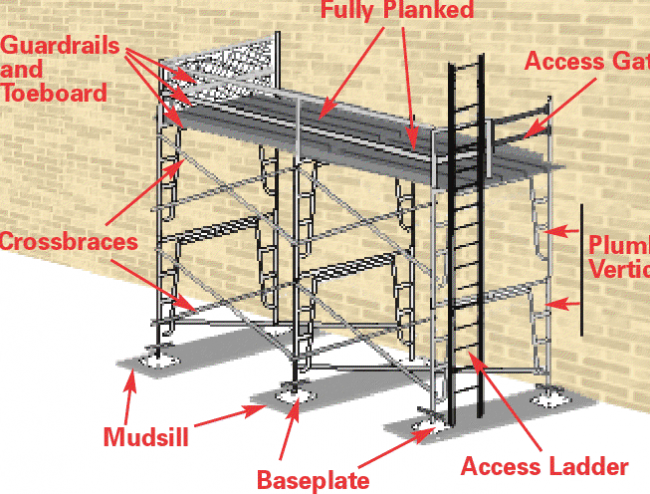
FREE SHIPPING ON
ALL QUALIFYING ORDERS
Enter your email below to join our mailing list:

The base to height ratio for a freestanding scaffold typically depends on the specific regulations and standards set by the relevant governing body or organization. However, in general, the base to height ratio for a freestanding scaffold should be at least 1:4. This means that the base of the scaffold should be at least one-fourth the height of the scaffold.
For example, if the scaffold is 20 feet high, the base of the scaffold should be at least 5 feet wide. This ratio helps ensure the stability and safety of the scaffold, especially when it is exposed to external forces such as wind, vibrations, or uneven surfaces.
It’s important to note that the specific base to height ratio requirements may vary based on factors such as the type of scaffold, the weight of the load it’s supporting, the terrain, and other factors. It’s important to consult the relevant regulations and guidelines to ensure that the scaffold is properly constructed and safe for use.





No spam, notifications only about products and updates.

Having dealt with MK Diamond Products and the Delahauts since the mid 1990’s it is sad to hear the news that they have closed their

I’ve told my wife and daughter to never follow a mortar mixer down the interstate. For over 30 years we have sold, rented, and repaired

This question is one of the most frequent mixer related questions our rental staff are asked. Our contractor customers know the importance of using the right tools for the job.

Trowel Trades, a company that specializes in equipment rental, tool retail, repair services, scaffolding and mast climber access solutions, enters the Silver Tier of the Masonry Alliance Program.
Your email was submitted successfully.
YOUR 10% OFF COUPON CODE IS WELCOME10.
See category exclusions below.
Category Exclusions:
Arbortech Brick and Mortar Saw, Compaction, Concrete Mixers, Concrete Walk Behind Saws, Drop Hammers, Grout Hogs, iQ Power Tools, Masonry Block Saws, Masonry Brick Saws, Mast Climbers, Mortar Mixers, Mud Buggy, Saws, Scaffold, Self Dumping Hoppers, Shoring, and Stihl